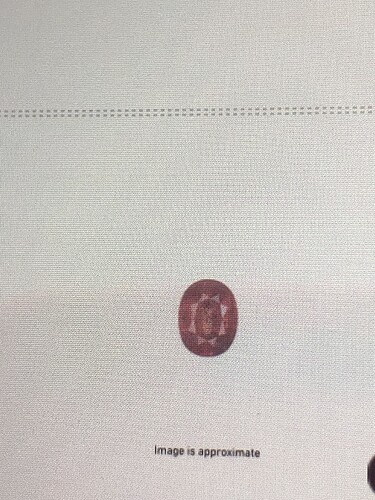I have just started learning about gemstones and am waiting on my microscope to start really digging in.
I have a gemstone that I sent to GIA for identification. It was what I thought except I don’t understand what the treatments actually mean from a value standpoint.
The report leaves me with more questions.
Can anyone help me interpret what this means?
Thanks so much!
1 Like
Hi Kathleen! Welcome to the forum!
If you haven’t already seen this, I recommend these IGS articles on ruby treatments:
Whether or not it effects the value is subjective. One customer might be resistant to purchasing a stone with enhancement, while another would be fine wearing the stone.
Obviously, an enhanced stone will not command a similar per carat price such as its unheated counterpart.
Hope your microscope arrives soon! It will definitely open up a new world… 
Cheers!
Troy
1 Like
Thanks for posting those links, I found them really insightful. I am curious, tho, is the top/first pic in the Ruby/Glass composite link considered synthetic, or is that an example of a natural ruby by way of comparison?
Also, the second article mentions that those doing the treatments don’t want to share their “secrets”. I guess it’s sensible that this is the case, but it seems strange to me that mineralogists and gemologists would not know treatments that presumably happen in clandestine places. I am not an expert and there may be an obvious explanation for this, but can you suggest why such treatments, which sounds pretty sophisticated, are not reproducible or understood by professionals?
1 Like
Hi Paul,
If you are referring to the side-by-side comparison of a ruby on the left vs one on the right with all of the light colored fractures… that is the same stone, before and after exposure, to a jewelry cleaning agent.
The author, Mr. Jeffrey Bergman (@jbergman), is an active member here. Hopefully, he can break away from his busy schedule and answer some of these question, as I am very new to the world of rubies/sapphires. My main focus has been Garnet, Spinel, Tourmaline, and Zircon.
There are definitely others here who could better answer than I.
For the treatment labs having a “secret sauce”, I believe it is basically so they can keep their process guarded, so other treatment labs can’t take way potential customers.
Cheers!
1 Like
THANK YOU! I am so pleased to know about these articles, Troy!!!
1 Like
Most welcome! There is a large library of articles, and other resources here at IGS that you can access through your dashboard, including mini-courses. The one on Rubies for instance, includes articles like the two posted earlier.

No, sorry, i was referring to the title pic, the one with the vine-like white material on the surface of the ruby (is there a term for that)? My question is where that one is considered synthetic?
This one:
Ok, thank you. I wasn’t sure if that was the image you were asking about.
IMHO, this is still considered a ruby with glass infill treatment. Since the glass is also providing a level of stabilization, it makes sense it is called a composite.
Similar context how “composite” is used for stabilized stone material like Turquoise and Lapis.
Did the seller disclose the lead glass treatment to you?
I didn’t read the article but I am thinking this ruby was heat set into a setting and the glass in its fractures melted out. I probably am wrong but if I understood my GIA training, this is what happens when the seller never discloses that the ruby has this type of treatment & the ruby is just destroyed in this process.
1 Like
Maybe I don’t follow, but that image is not exactly representative of the kind of stone one would work to synthetically reproduce. If anomalies in mineral content of a stone like that exist, it seems to me that they are not modern synthetic anomalies. Why bother? I doubt that would fly off the shelf.
The ruby pictured has been put in an ultrasonic cleaner and or exposed to heat/cold temps. The lead-glass treatment is so unstable that it can very easily be damaged. It’s not a gemstone you can pass down to future generations. Too fragile. For the most part, a lead glass-filled ruby/sapphire is unusable as a gem in its natural state. Treaters/dealers get a severely fractured low-quality gemstone and pretty much glue the pieces together and sell it as a natural gem for thousands of dollars when it’s not even worth $30. If the OP wasn’t aware she was buying a lead glass-filled ruby, I suggest that she get a refund tout de suite
Hi, I’m sorry I think I got out of sync on this, I was referencing the main header photo in the link, the ruby with the whitish surface veins (I am not familiar with the term for that). I see now you were referencing OPs pic. Please ignore my comment, and thanks always for the insightful replies.
Gia report 3 grand bottom. Otherwise idk


